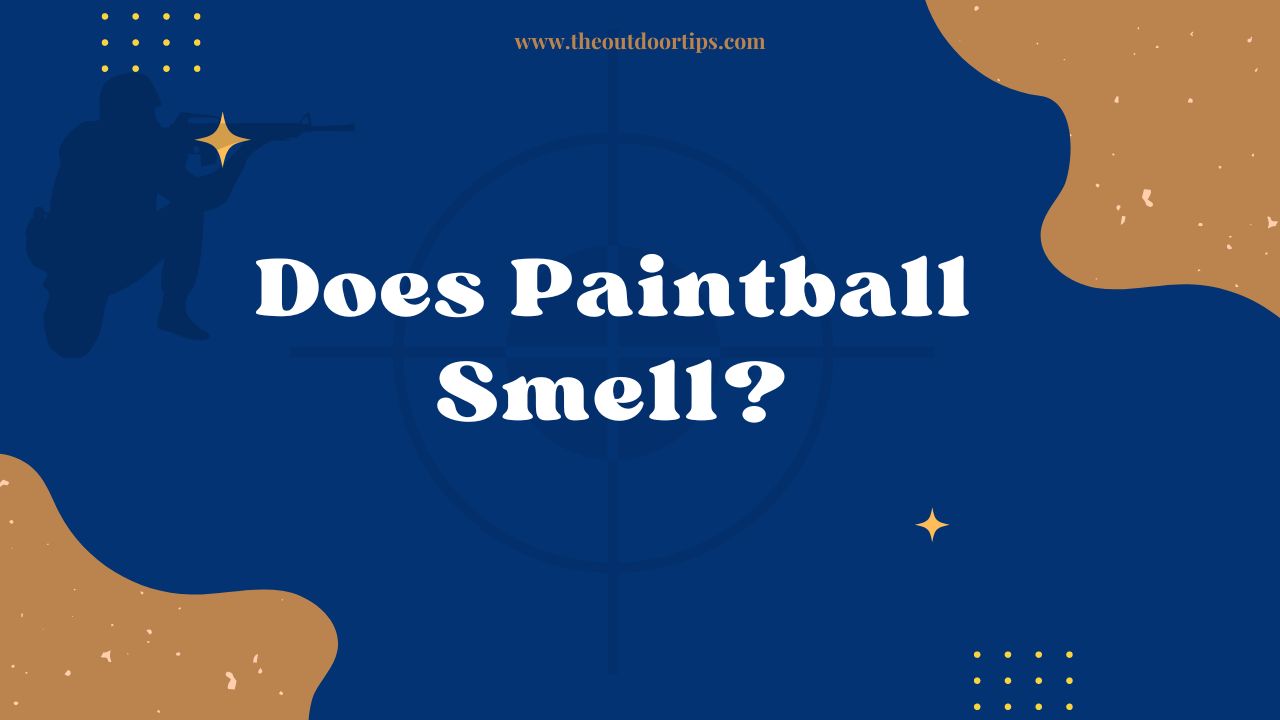Paintballing, a thrilling sport that engages the senses of sight, sound, and touch, may also intrigue your sense of smell. In response to the intriguing question posed by the title, this article delves into the realm of paintball smell. By investigating the factors that contribute to the potential aroma of paintball, we’ll unravel the scents associated with paintball markers, paintballs, and the outdoor environment where the game takes place.

Does Paintball Smell?
Short Answer: Yes, paintball does have a distinct smell, primarily originating from the paintballs themselves, as well as the markers and the outdoor environment. The smell is often described as a mixture of the paint’s chemical scent and the natural surroundings.
Paintballing indeed carries an olfactory dimension that involves distinct scents. The smell is influenced by several factors, offering an intriguing multisensory experience to players and enthusiasts.
1. Paintball Markers and Propellants
Paintball markers, also known as paintball guns, play a crucial role in the scent of the game. These markers utilize compressed air or CO2 to propel paintballs, and this propulsion mechanism can release a faint scent of gas or propellant. However, this scent is often quite subtle and may not be noticeable in the heat of gameplay.
2. The Scent of Paintballs
Paintballs themselves contribute significantly to the distinctive smell of paintballing. The outer shell of a paintball is typically made from gelatin, which encapsulates the liquid paint inside. This gelatin can emit a faint scent, often described as a combination of the paint’s chemical composition and the outdoor environment.
3. Outdoor Environment
The scent of paintball can also be influenced by the natural surroundings where the game takes place. Outdoor fields, forests, or other terrains can introduce additional scents from foliage, soil, and the surrounding vegetation. These scents intermingle with the aroma of paintballs and markers, creating a unique sensory experience.
4. Paint Fill
The paint fill inside the paintballs can also contribute to the smell. Paint fill is typically a water-based solution mixed with pigments and additives for color and consistency. While the smell is usually faint, it can be detected when handling a large quantity of paintballs.
5. Variations in Scent
It’s important to note that the perceived smell of paintballs can vary based on individual sensitivity, environmental conditions, and the type of paintballs used. Some players might detect the scent more strongly, while others may not notice it at all.
Embracing the Scent: The Paintball Experience
The distinct smell associated with paintballing contributes to the immersive experience of the game. This multisensory encounter adds depth to the gameplay, intertwining the tactile feel of markers, the visual spectacle of paint splatters, and the auditory symphony of shots fired.
As players navigate through outdoor fields, forests, or urban landscapes, the aroma of paintballs merges with the natural scents of the environment, creating a harmonious blend of sensations. This fusion of scents enhances the overall paintball experience, making it a truly holistic engagement for the senses.
Final Thoughts:
Does paintball smell? Yes, it does, and this scent is an integral part of the multifaceted paintball experience. From the markers to the paintballs themselves, and even the outdoor surroundings, the scent landscape of paintballing adds a unique layer to the game. As players immerse themselves in the strategies, camaraderie, and excitement of paintball, the olfactory dimension further enriches the sensory tapestry, making each match an unforgettable multisensory adventure.
